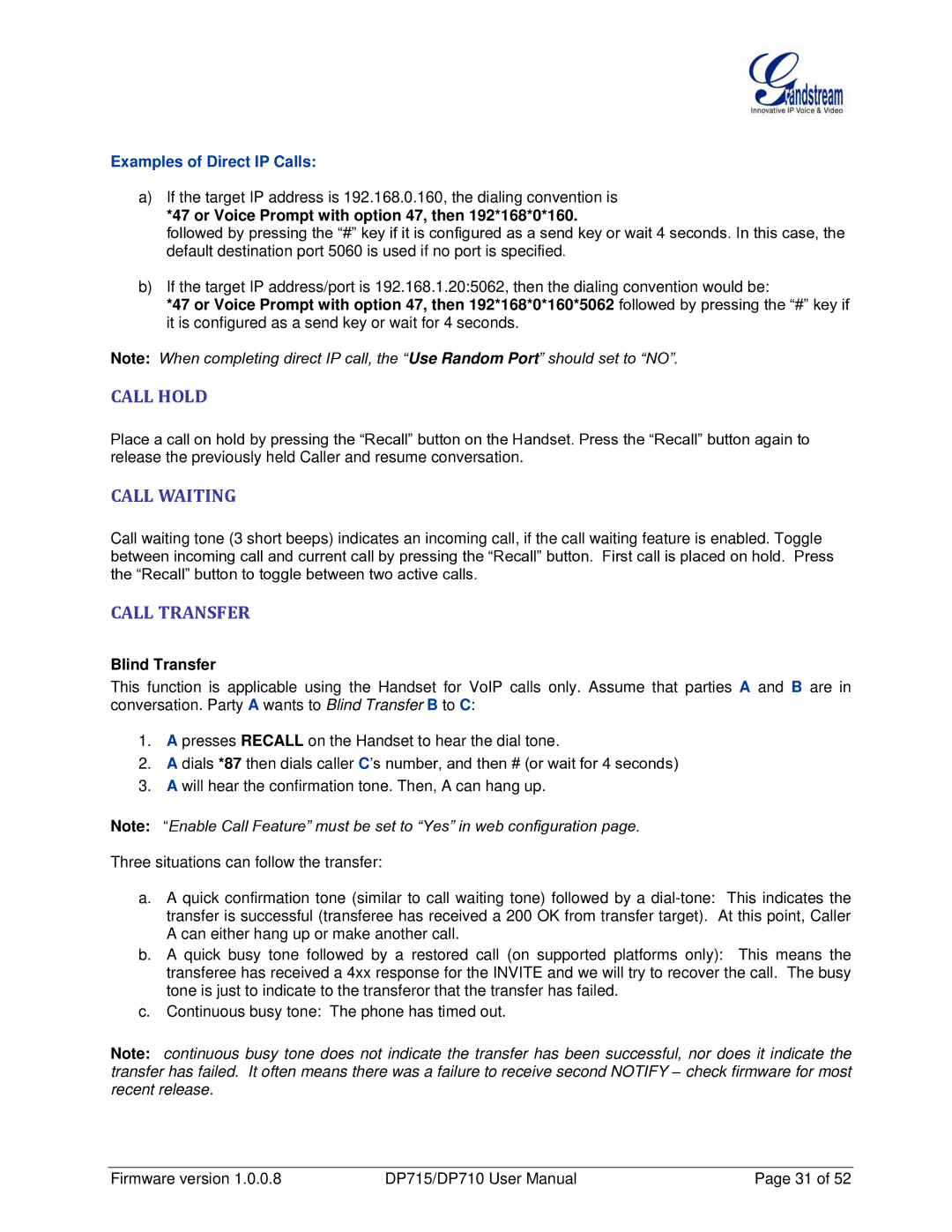
Examples of Direct IP Calls:
a)If the target IP address is 192.168.0.160, the dialing convention is
*47 or Voice Prompt with option 47, then 192*168*0*160.
followed by pressing the “#” key if it is configured as a send key or wait 4 seconds. In this case, the default destination port 5060 is used if no port is specified.
b)If the target IP address/port is 192.168.1.20:5062, then the dialing convention would be:
*47 or Voice Prompt with option 47, then 192*168*0*160*5062 followed by pressing the “#” key if it is configured as a send key or wait for 4 seconds.
Note: When completing direct IP call, the “Use Random Port” should set to “NO”.
CALL HOLD
Place a call on hold by pressing the “Recall” button on the Handset. Press the “Recall” button again to release the previously held Caller and resume conversation.
CALL WAITING
Call waiting tone (3 short beeps) indicates an incoming call, if the call waiting feature is enabled. Toggle between incoming call and current call by pressing the “Recall” button. First call is placed on hold. Press the “Recall” button to toggle between two active calls.
CALL TRANSFER
Blind Transfer
This function is applicable using the Handset for VoIP calls only. Assume that parties A and B are in conversation. Party A wants to Blind Transfer B to C:
1.A presses RECALL on the Handset to hear the dial tone.
2.A dials *87 then dials caller C’s number, and then # (or wait for 4 seconds)
3.A will hear the confirmation tone. Then, A can hang up.
Note: “Enable Call Feature” must be set to “Yes” in web configuration page.
Three situations can follow the transfer:
a.A quick confirmation tone (similar to call waiting tone) followed by a
b.A quick busy tone followed by a restored call (on supported platforms only): This means the transferee has received a 4xx response for the INVITE and we will try to recover the call. The busy tone is just to indicate to the transferor that the transfer has failed.
c.Continuous busy tone: The phone has timed out.
Note: continuous busy tone does not indicate the transfer has been successful, nor does it indicate the transfer has failed. It often means there was a failure to receive second NOTIFY – check firmware for most recent release.
Firmware version 1.0.0.8 | DP715/DP710 User Manual | Page 31 of 52 |
